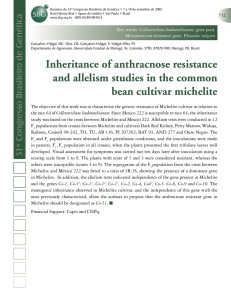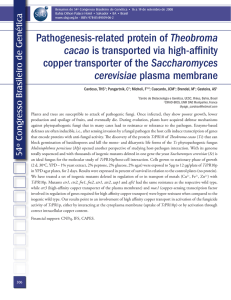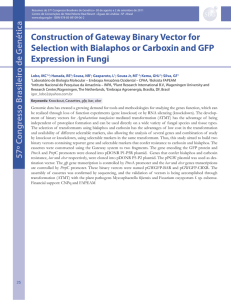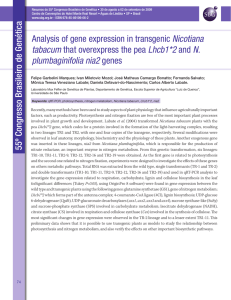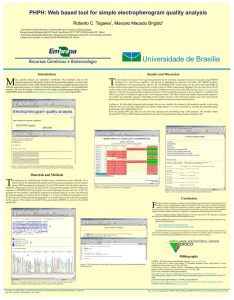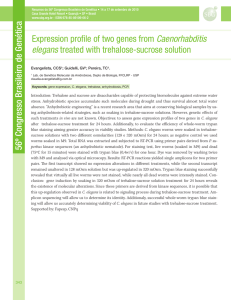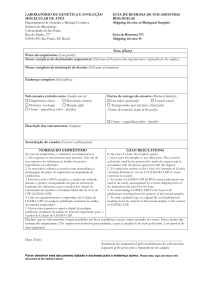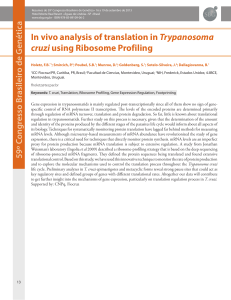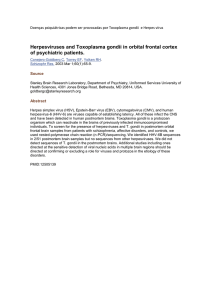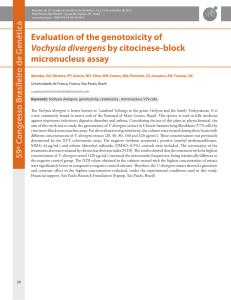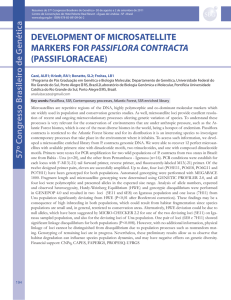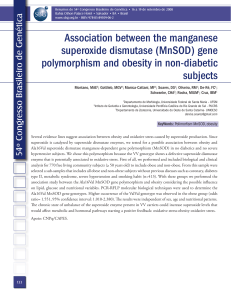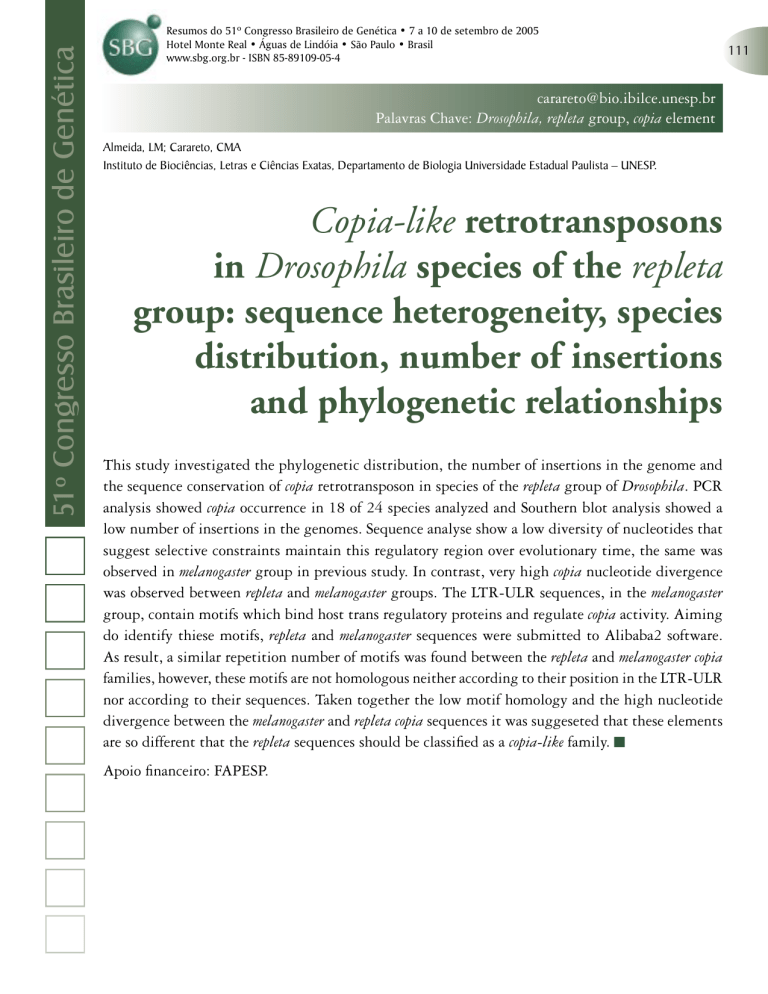
51º Congresso Brasileiro de Genética
Resumos do 51º Congresso Brasileiro de Genética • 7 a 10 de setembro de 2005
Hotel Monte Real • Águas de Lindóia • São Paulo • Brasil
www.sbg.org.br - ISBN 85-89109-05-4
[email protected]
Palavras Chave: Drosophila, repleta group, copia element
Almeida, LM; Carareto, CMA
Instituto de Biociências, Letras e Ciências Exatas, Departamento de Biologia Universidade Estadual Paulista – UNESP.
Copia-like retrotransposons
in Drosophila species of the repleta
group: sequence heterogeneity, species
distribution, number of insertions
and phylogenetic relationships
This study investigated the phylogenetic distribution, the number of insertions in the genome and
the sequence conservation of copia retrotransposon in species of the repleta group of Drosophila. PCR
analysis showed copia occurrence in 18 of 24 species analyzed and Southern blot analysis showed a
low number of insertions in the genomes. Sequence analyse show a low diversity of nucleotides that
suggest selective constraints maintain this regulatory region over evolutionary time, the same was
observed in melanogaster group in previous study. In contrast, very high copia nucleotide divergence
was observed between repleta and melanogaster groups. The LTR-ULR sequences, in the melanogaster
group, contain motifs which bind host trans regulatory proteins and regulate copia activity. Aiming
do identify thiese motifs, repleta and melanogaster sequences were submitted to Alibaba2 software.
As result, a similar repetition number of motifs was found between the repleta and melanogaster copia
families, however, these motifs are not homologous neither according to their position in the LTR-ULR
nor according to their sequences. Taken together the low motif homology and the high nucleotide
divergence between the melanogaster and repleta copia sequences it was suggeseted that these elements
are so different that the repleta sequences should be classified as a copia-like family.
Apoio financeiro: FAPESP.
111

